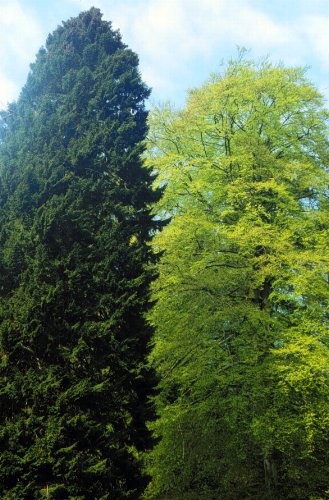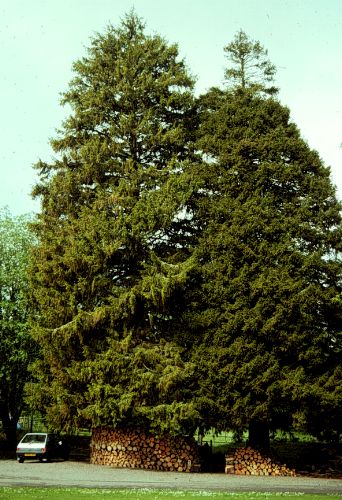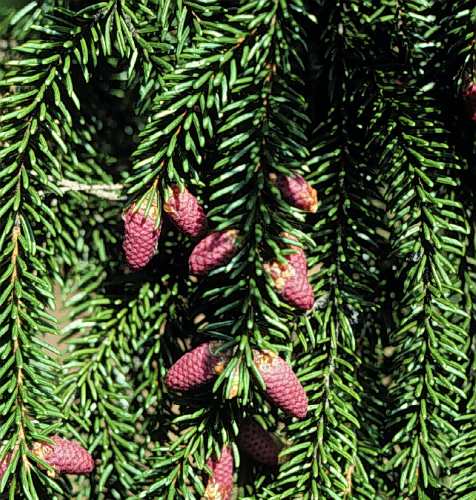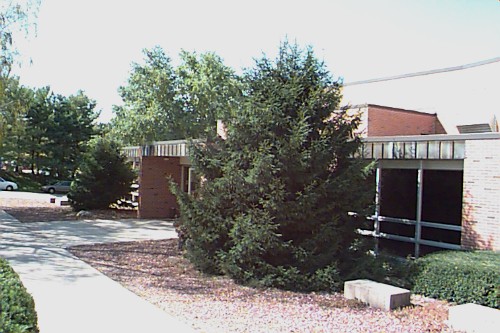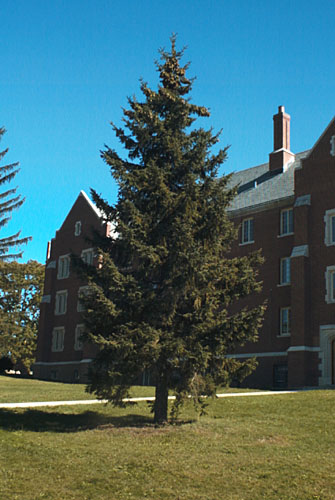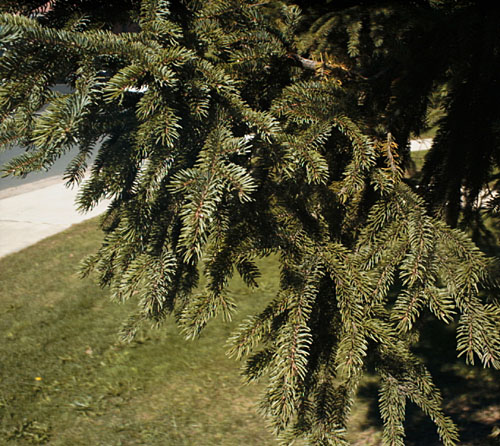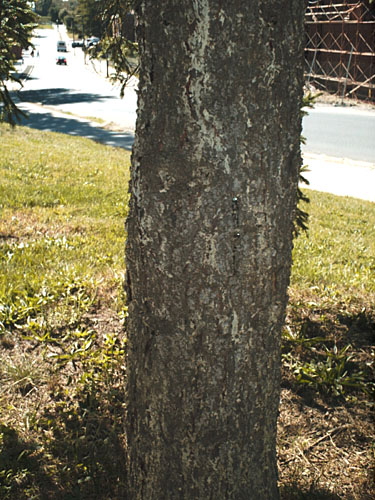Picea orientalis
Oriental Spruce
Pinaceae
ExpandHabitat
- native to Asia Minor
- zone 4
Habit and Form
- evergreen tree with horizontal, pendulous branches
- narrow, compact, conical shape
- 50' to 60' tall , can reach 120'
- slow growth rate
- medium texture
Summer Foliage
- needles are 4-sided with a blunt tip
- 1 to 4 stomatal lines on each side
- needles are 0.25" to 0.50" long
- shortest needles of all spruces
- dark green color
Autumn Foliage
- no fall color, evergreen
Flowers
- monoecious
- not ornamentally important
Fruit
- cones are on short stalks found at the ends of branches
- mature cones are cylindrical; 2" to 4" long by 1" wide
- reddish purple color turning to a medium brown at maturity
- cone scales have smooth margins
Bark
- medium brown color
- peeling, thin scales
Culture
- adaptable to many soil types as long as they are moist
- can not tolerate harsh winters
- full sun
Landscape Use
- specimen
- screen
- large shade tree when an evergreen is desired
Liabilities
- browning of foliage in severe winters
- no disease or insect problems
ID Features
- large, narrow, evergreen tree
- long cones with entire scales
- needles leave petiole on stem when pulled off
- very short needles that are 4-sided
- dark green color
Propagation
- by seed, requires no treatments
- cultivars by grafting or some by cuttings
Cultivars/Varieties
'Aureospicata' (the same as 'Aurea') - A popular selection, this plant is notable for its bright yellow new growth. The needles mature to green on this broad tree.
'Gowdy' - This narrow selection features short, deep green needles and a fine branching habit. It is slow-growing and smaller, perhaps reaching 10' tall in time.
'Skylands' - Perhaps the most popular form, this cultivar bears golden needles all year. The color may be muted on shaded branches of this slow-growing, pyramidal tree.
Various dwarf and semi-weeping dwarf selections exist, including: 'Nana', a mounded grower to 3' tall; and 'Pendula' (also called 'Weeping Dwarf'), a slow-grower with drooping branchlets.
